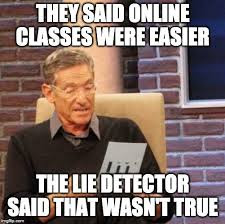A conclusion should
- stress the importance of your givens and what you determined,
- give the project a sense of completeness, and
- leave a final impression on the reader/viewer/listener.
Suggestions
- Answer "So What?"Show your readers why this project was important.
- Synthesize, don't summarize
- Don't simply repeat things that were in your project. Show them how the points you made and the support and examples you used were not random, but fit together.
- Create a new meaning
- You don't have to give new information to create a new meaning. By demonstrating how your ideas work together, you can create a new picture. Often the sum of the project is worth more than its parts.
Strategies
Example
Challenging the reader: By issuing a challenge to your readers, you are helping them to redirect the information in the project, and they may apply it to their own lives.
Introduction
From the parking lot, I could see the towers of the castle of the Magic Kingdom standing stately against the blue sky. To the right, the tall peak of The Matterhorn rose even higher. From the left, I could hear the jungle sounds of Adventureland. As I entered the gate, Main Street stretched before me with its quaint shops evoking an old-fashioned small town so charming it could never have existed. I was entranced. Disneyland may have been built for children, but it brings out the child in adults.
Conclusion
I thought I would spend a few hours at Disneyland, but here I was at 1:00 A.M., closing time, leaving the front gates with the now dark towers of the Magic Kingdom behind me. I could see tired children, toddling along and struggling to keep their eyes open as best they could. Others slept in their parents' arms as we waited for the parking lot tram that would take us to our cars. My fifty-year-old feet ached, and I felt a bit sad to think that in a couple of days I would be leaving California, my vacation over, to go back to my desk. But then I smiled to think that for at least a day I felt ten years old again.
Example - Though serving on a jury is not only a civic responsibility but also an interesting experience, many people still view jury duty as a chore that interrupts their jobs and the routine of their daily lives. However, juries are part of America's attempt to be a free and just society. Thus, jury duty challenges us to be interested and responsible citizens.
Looking to the future: Looking to the future can emphasize the importance of your project or redirect the readers' thought process. It may help them apply the new information to their lives or see things with a broader lens.
Example - Without well-qualified teachers, schools are little more than buildings and equipment. If higher-paying careers continue to attract the best and the brightest students, there will not only be a shortage of teachers, but the teachers available may not have the best qualifications. Our youth will suffer. And when youth suffers, the future suffers.
Posing questions: Posing questions, either to your readers or in general, may help your readers gain a new perspective on the topic, which they may not have held before reading your conclusion. It may also bring your main ideas together to create a new meaning.
Example - Campaign advertisements should help us understand the candidate's qualifications and positions on the issues. Instead, most tell us what a boob or knave the opposing candidate is, or they present general images of the candidate as a family person or God-fearing American. Do such advertisements contribute to creating an informed electorate or a people who choose political leaders the same way they choose soft drinks and soap?






